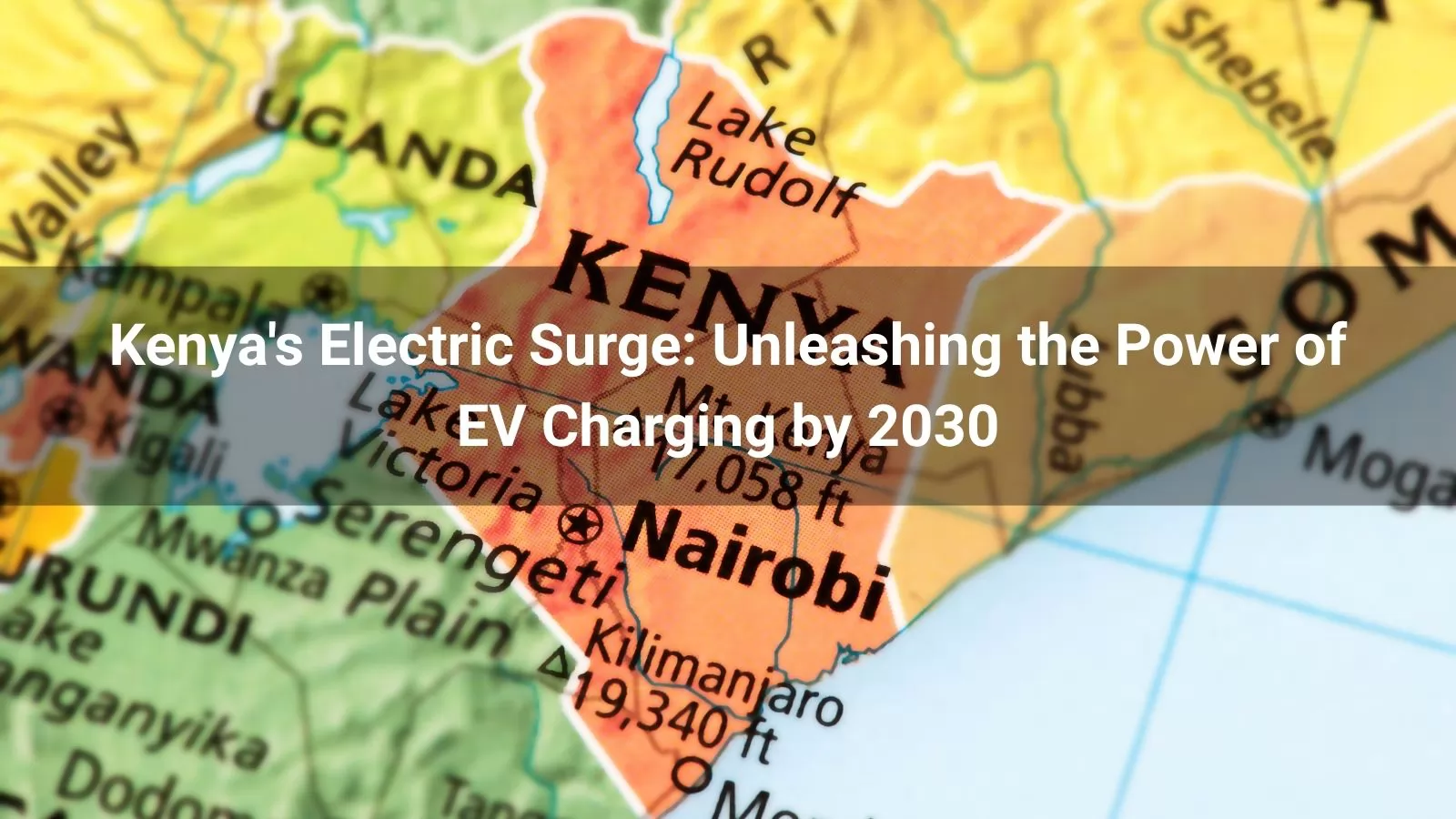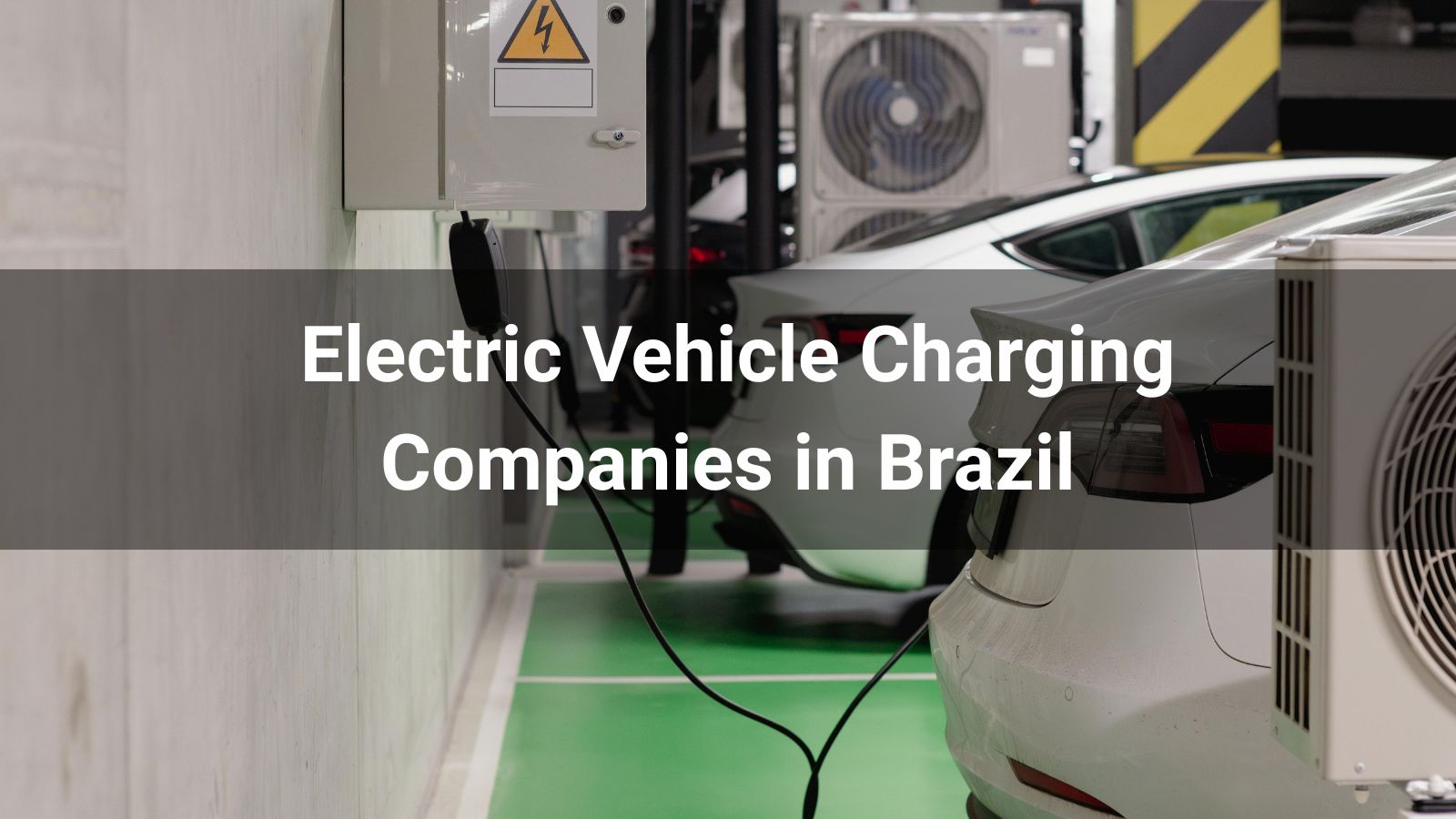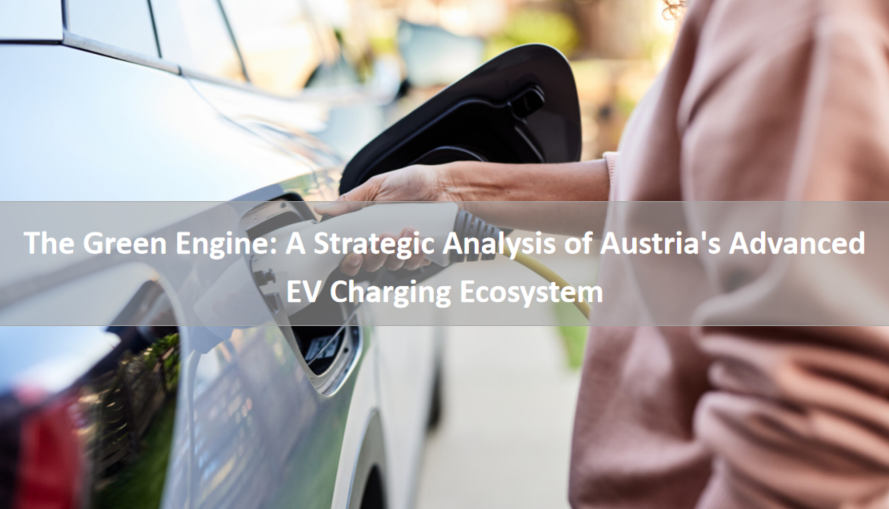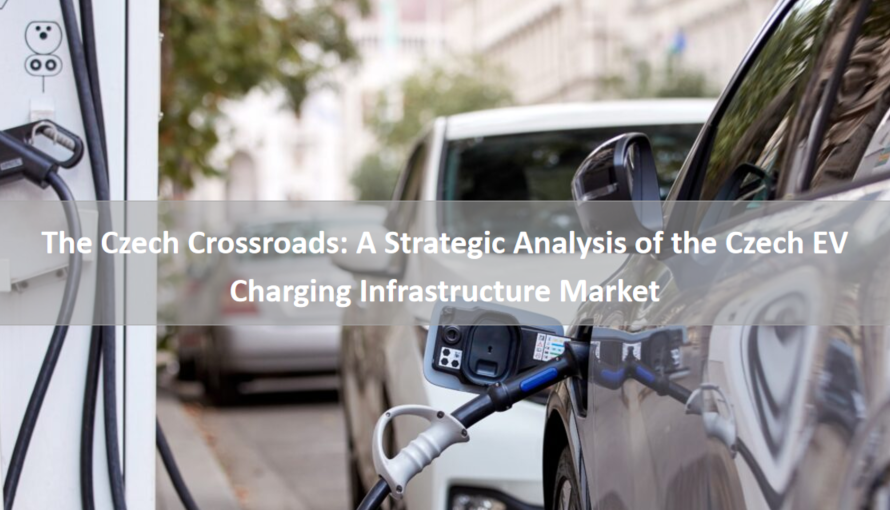
Executive Summary
Kenya is positioning itself as a leader in electric vehicle (EV) adoption in East Africa, leveraging renewable energy potential and strategic policies to foster a nascent but promising EV charging infrastructure. This report analyzes the national policies, market size, development status, opportunities, and challenges of EV charging stations in Kenya within a structured framework. National policies, including tax incentives and the draft E-mobility Policy, aim to support infrastructure growth and EV adoption, aligning with Kenya’s Vision 2030 and climate goals. The EV market, though small, is projected to grow from USD 0.05 billion in 2025 to USD 0.25 billion by 2030 at a CAGR of 38.0%, driving demand for charging stations. Development is progressing with approximately 20 public charging points, primarily in Nairobi, supported by private-sector initiatives and Kenya Power’s investments. Opportunities include leveraging Kenya’s 90% renewable energy grid, public-private partnerships, and battery-swapping innovations, while challenges such as high electricity costs, limited infrastructure, and consumer awareness persist. Strategic recommendations focus on accelerating infrastructure deployment, finalizing regulations, and promoting renewable energy integration to ensure sustainable growth.
1. National Policies
Kenya’s national policies for EV charging infrastructure are evolving, with tax incentives, a draft E-mobility Policy, and renewable energy strategies fostering a supportive environment. However, delays in policy finalization and limited fiscal capacity hinder large-scale implementation.
Kenya’s policy framework aligns with its Vision 2030 and commitment to reduce greenhouse gas emissions by 32% by 2030 under the Paris Agreement. Key policy elements include:
-
Tax Incentives and Financial Support:
-
The Kenyan government offers reduced import duties and VAT exemptions for EVs, lowering acquisition costs and stimulating demand. For example, the Finance Act 2023 reduced excise duties on EVs from 20% to 10%, aligning with strategies in Chile to boost adoption.
-
The State Department for Transport is developing incentives for charging infrastructure, including subsidies for private operators, though these are not yet fully implemented. This mirrors global best practices, such as Austria’s subsidies of up to USD 32,320 for DC chargers.
-
Draft E-mobility Policy:
-
The draft E-mobility Policy, under review as of 2025, proposes measures to support charging infrastructure, encourage local manufacturing, and provide tax incentives for EVs. It aims to fast-track infrastructure development and address high electricity costs through competitive pricing regulations.
-
The policy draws inspiration from regional models like Ecuador’s National Strategy for Electromobility, which emphasizes infrastructure expansion but has faced implementation delays.
-
Renewable Energy Integration:
-
Kenya’s energy mix, with over 90% from renewable sources (geothermal, hydro, and solar), supports sustainable charging infrastructure. The Ministry of Energy’s renewable energy roadmap, including projects like the 400 MW Menengai Geothermal Plant, provides a foundation for green charging hubs.
-
Collaboration with energy companies to harness renewables, as recommended by the Kenya Institute for Public Policy Research and Analysis (KIPPRA), can reduce electricity costs and enhance EV appeal.
-
Regulatory Framework Gaps:
-
The lack of finalized regulations for charging standards, such as connector types (e.g., CCS2, CHAdeMO) and interoperability protocols like OCPP, creates uncertainty for investors. This mirrors global challenges, such as Japan’s reliance on CHAdeMO, which complicates cross-border compatibility.
-
Limited government liquidity, a challenge also faced in Latin America, restricts public investment in infrastructure, necessitating private-sector involvement.
2. Market Size
Kenya’s EV market is nascent but growing rapidly, projected to increase from USD 0.05 billion in 2025 to USD 0.25 billion by 2030 at a CAGR of 38.0%, driving demand for charging infrastructure. The charging station market, though small, is poised for expansion to support this growth.
-
EV Market Growth:
-
Kenya’s EV market is estimated at 1,000 vehicles in 2025, primarily electric two- and three-wheelers used in urban transport. By 2030, this is projected to reach 10,000 vehicles, driven by government incentives and rising fuel costs. The CAGR of 38.0% exceeds global averages, reflecting Kenya’s potential as an African EV hub.
-
This growth aligns with regional trends, such as Ecuador’s 9.9% EV market penetration by 2025, but is constrained by high upfront costs and limited local manufacturing.
-
Charging Infrastructure Market:
-
As of 2025, Kenya has approximately 20 public charging stations, with 6 in Nairobi and 1 in Mombasa, according to Electromaps data. Kenya Power’s Kshs 6.5 million investment in a Nairobi charging station in 2025 indicates growing momentum.
-
The global EV charging station market, projected to grow from USD 28.47 billion in 2025 to USD 76.31 billion by 2032 at a CAGR of 15.1%, provides a benchmark for Kenya’s potential, though its market remains smaller due to economic constraints.
-
Comparative Insights:
-
Unlike mature markets like China, with 45% of public chargers being fast chargers, Kenya’s infrastructure is dominated by Level 2 chargers, limiting scalability for long-distance travel.
-
The focus on two- and three-wheelers, as seen in Rwanda’s Ampersand battery-swapping model, suggests a niche market for Kenya to target, requiring fewer high-capacity chargers.
3. Development Status
Kenya’s EV charging infrastructure is in its early stages, with approximately 20 public charging points concentrated in Nairobi and Mombasa. Private-sector initiatives and Kenya Power’s investments are driving progress, but the network is insufficient for widespread adoption.
-
Current Infrastructure Deployment:
-
Kenya has around 20 public charging stations, primarily Level 2 chargers in Nairobi and one in Mombasa, as per Electromaps data. Kenya Power’s second charging station, launched in 2025 with free services, targets urban users and public transport.
-
The infrastructure supports a small EV fleet, particularly two- and three-wheelers, but is inadequate for four-wheelers, which require 5-hour charging for 300 km, as noted in the 2023 E-mobility Conference Report.
-
Private-Sector and Utility Engagement:
-
Kenya Power plans to transition its fleet to EVs by 2027 and expand charging infrastructure in Nairobi and Nakuru, signaling strong utility involvement.
-
Private players like BasiGo, which operates electric buses in Nairobi, have introduced charging hubs, with one station supporting a 250 km range in under two hours.
-
Renewable Energy Integration:
-
Kenya’s 90% renewable energy grid, with 3,074.34 MW installed capacity against a 2,056.67 MW demand, supports sustainable charging. Projects like Solar Freeze, shortlisted by Qualcomm in 2025, highlight potential for solar-powered chargers.
-
Co-locating chargers with renewable sources, as seen in China’s BYD megawatt chargers, could reduce grid stress and costs.
-
Infrastructure Limitations:
-
The limited number of chargers (8 total in 2023) and long charging times (4-5 hours) exacerbate range anxiety, a global barrier noted by the IEA.
-
Grid instability, with planned rotational blackouts in 2023 to protect the transmission network, poses risks to charging reliability, particularly in western Kenya.
4. Opportunities
Kenya’s EV charging infrastructure market offers significant opportunities, driven by its renewable energy dominance, growing urban transport needs, and innovative battery-swapping models. Strategic partnerships and international support can accelerate development.
-
Renewable Energy Integration:
-
Kenya’s 90% renewable energy mix, including geothermal and solar, enables sustainable charging infrastructure. Co-locating chargers with projects like the Menengai Geothermal Plant can reduce costs, as seen in China’s renewable-powered chargers.
-
Innovations like Solar Freeze’s solar-powered solutions, recognized in 2025, offer scalable models for rural and urban charging.
-
Public-Private Partnerships:
-
Kenya Power’s investments and partnerships with private operators like BasiGo demonstrate potential for scaling infrastructure. Collaborations with global players like ABB, as seen in Europe, could bring expertise and funding.
-
International support, such as from the World Bank’s renewable energy programs, can fund pilot projects, mirroring Latin America’s aid-driven models.
-
Battery-Swapping Innovations:
-
Battery-swapping stations, as implemented by Ampersand in Rwanda with 37,000 monthly swaps, offer a model for Kenya’s two- and three-wheeler market. These stations reduce charging times to 3-5 minutes, addressing range anxiety.
-
The draft E-mobility Policy’s focus on battery swapping aligns with China’s success, where 50% of heavy-duty trucks sold in 2023 used this technology.
-
Urban and Commercial Transport:
-
Kenya’s urban centers, like Nairobi, and growing demand for electric matatus (minibuses) present a niche market for charging hubs. BasiGo’s electric bus charging model demonstrates viability for public transport.
-
Kenya’s role as an East African logistics hub supports the development of charging corridors along highways, enhancing regional connectivity.
5. Challenges
Kenya’s EV charging infrastructure faces significant challenges, including high electricity costs, limited infrastructure, grid instability, and low consumer awareness. Addressing these requires coordinated policy, investment, and education efforts.
-
High Electricity Costs:
-
High electricity costs, noted by the Kenya Association of Manufacturers in 2018, make EVs less attractive despite a 1,017.67 MW reserve capacity. This mirrors Latin America’s cost-related barriers to adoption.
-
Competitive pricing regulations, as proposed in the E-mobility Policy, are critical to reducing costs and driving demand.
-
Limited Charging Infrastructure:
-
With only 20 public charging stations, Kenya’s infrastructure is insufficient, particularly for four-wheelers requiring 5-hour charging for 300 km. This exacerbates range anxiety, a global issue noted by PwC.
-
The concentration of chargers in Nairobi limits access for rural users, requiring targeted expansion plans.
-
Grid Instability:
-
Kenya’s grid faces overloading risks, with planned blackouts in 2023 to protect the transmission network, particularly in western Kenya. A USD 5.3 billion investment is needed to revamp the grid, posing a financial challenge.
-
Uncoordinated charging, as seen globally, could exacerbate peak load issues, necessitating smart charging solutions like IoT-enabled chargers.
-
Low Consumer Awareness:
-
Limited awareness of EV operating costs and benefits, as highlighted by KIPPRA, deters adoption. Range anxiety and high upfront EV costs (twice that of fossil-fuel vehicles) further hinder uptake.
-
Lack of standardization, such as varying connector types (e.g., CCS1, CHAdeMO), complicates infrastructure development, as seen globally.
Strategic Recommendations
-
Accelerate Infrastructure Deployment:
-
Fast-track the E-mobility Policy to deploy 500 charging stations by 2028, prioritizing highways and urban centers like Nairobi and Mombasa. Focus on Level 2 and fast chargers to support diverse EV types.
-
Implement battery-swapping stations for two- and three-wheelers, drawing on Rwanda’s Ampersand model, to reduce charging times.
-
Finalize Regulatory Frameworks:
-
Adopt global standards like OCPP and ISO 15118 for interoperability and safety, ensuring compatibility across EV models.
-
Establish competitive electricity pricing models to reduce costs, as proposed by KIPPRA, leveraging Kenya’s renewable energy surplus.
-
Foster Public-Private Partnerships:
-
Expand Kenya Power’s partnerships with private operators like BasiGo and global firms like ABB to scale infrastructure. Offer tax breaks for private investments, as in Austria.
-
Engage international donors like the World Bank to fund solar-powered charging hubs, mirroring Latin America’s aid-driven models.
-
Enhance Consumer Awareness:
-
Launch campaigns to educate consumers on EV benefits and charger availability, using platforms like Electromaps. Address range anxiety through demonstrations and test drives.
-
Introduce financing models, such as leasing, to reduce upfront EV costs, drawing on China’s incentive programs.
-
Leverage Renewable Energy:
-
Co-locate charging stations with geothermal and solar projects, using battery storage to manage peak loads, as in China’s BYD model.
-
Pilot V2G systems to provide grid services, enhancing economic viability, as seen in Europe’s ISO 15118-20 standard.
Conclusion
Kenya is poised to lead East Africa’s electromobility transition, supported by progressive policies, a renewable energy-rich grid, and private-sector momentum. The EV market’s projected growth to USD 0.25 billion by 2030 and plans for expanded charging infrastructure signal strong potential, but high electricity costs, limited chargers, and grid instability pose challenges. By leveraging renewable energy, battery-swapping innovations, and public-private partnerships, Kenya can build a sustainable charging ecosystem, enhancing its role as a regional leader in green transport and contributing to global climate goals.
Read more:
10 Best DC Fast Chargers 2025
Top 10 EV Charging Companies in the World 2025
Top 10 DC EV Charger Companies in China 2025








